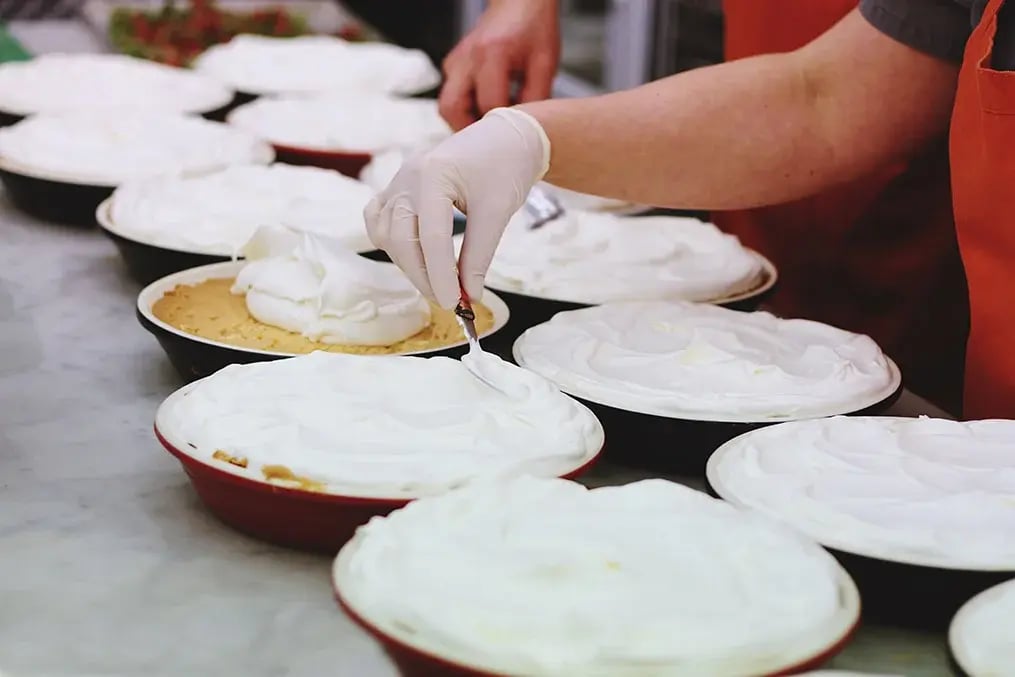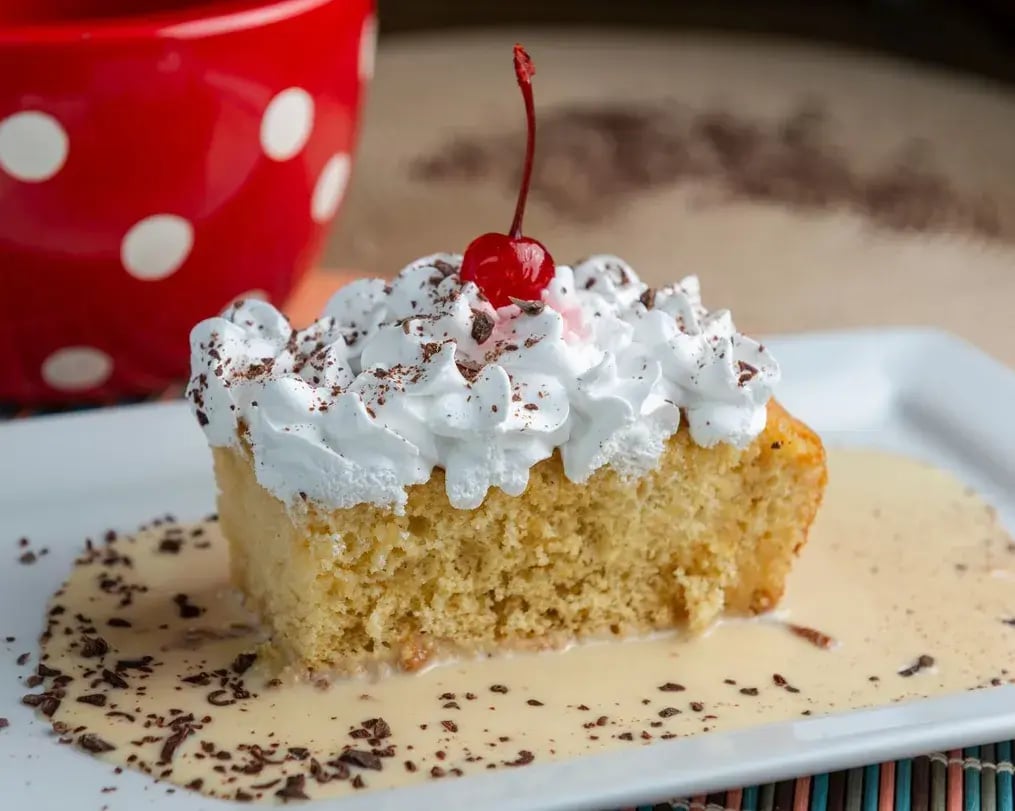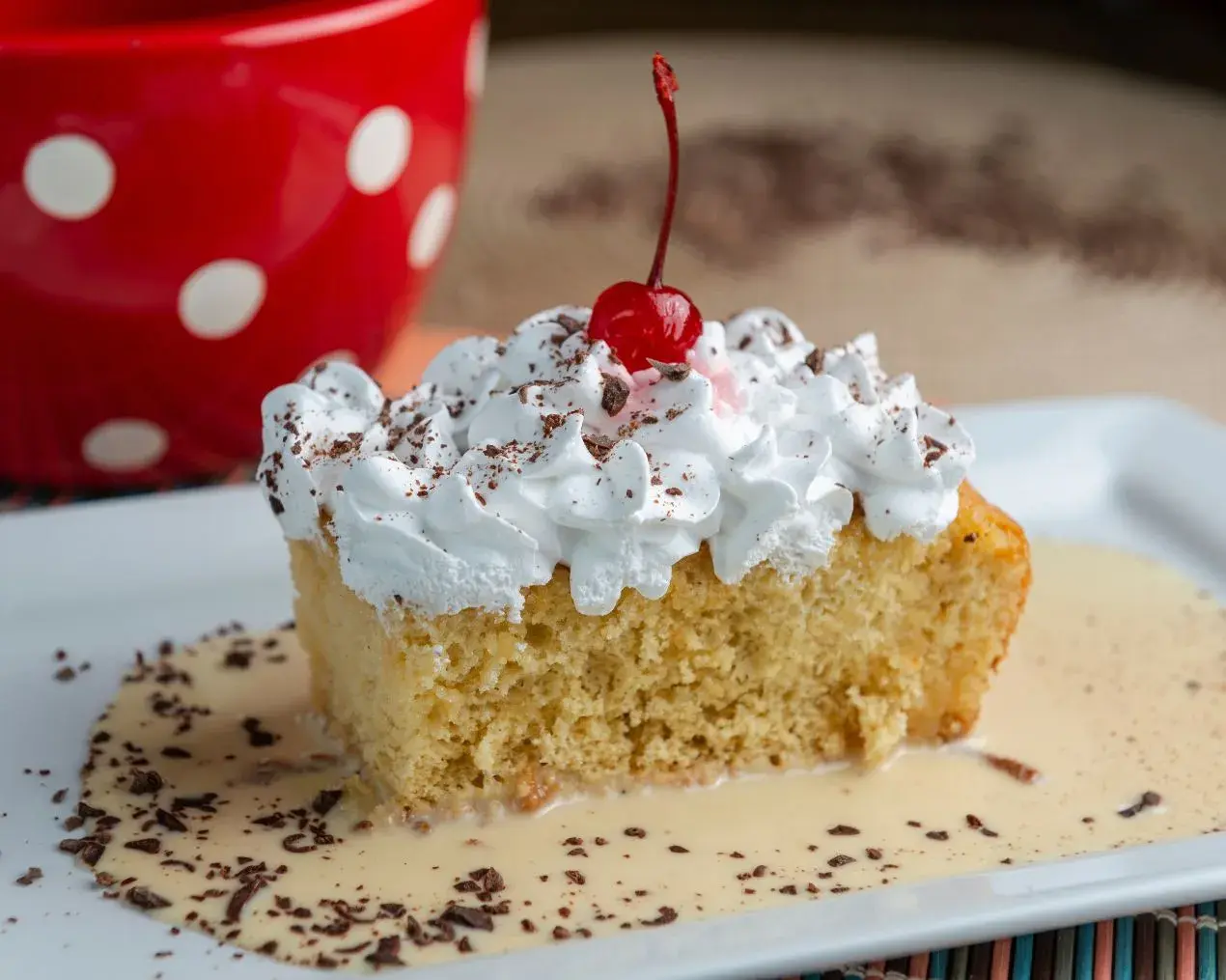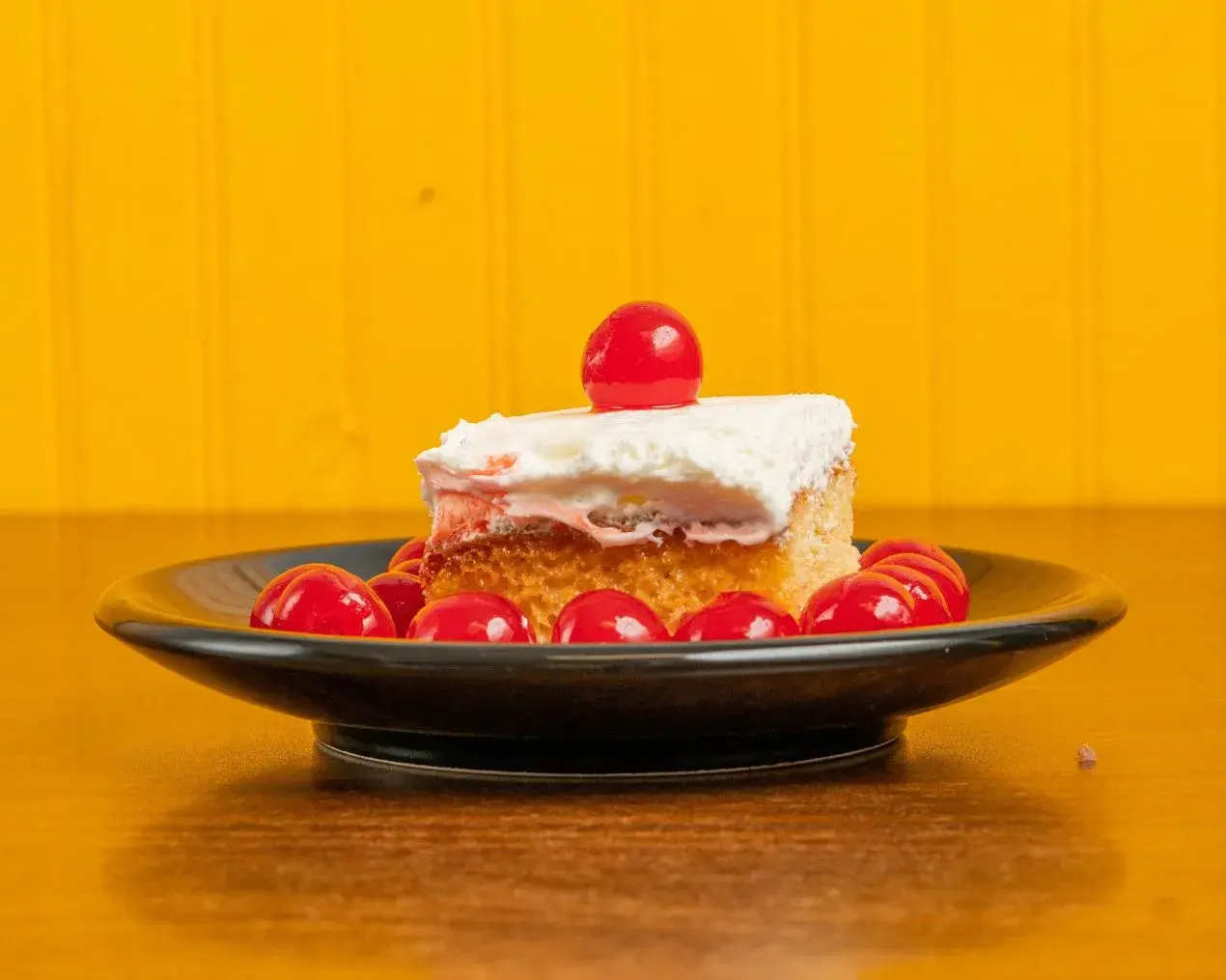Learn how to make the authentic Tres Leches Cake, a rich and creamy Latin milk dessert, with our easy step-by-step recipe.

History of tres leches Cake
The Tres Leches cake has a long history that evolved with colonization, and for a certain time, was only enjoyed by the uber-rich in Latin America, until the ingredients used to make the cake became cheaper and more accessible. Living up to its name, the Tres Leches Cake contains three different forms of milk. “Tres” means three, and “leches” means milk, so namely whole milk, condensed milk, and evaporated milk. These are absorbed by the dough, which results in a moist and milky cake that is simply irresistible.
Unless you have been living in dessert oblivion so far, you might know that tres leches cakes are being sold in every bakery in town – from the upscale ones to the medium fancy ones. It might have been an influencer, it might have been an experimental baker, we are not sure, but a slice of tres leches cake is hot right now, and we don’t know who started the trend. If you simply want to try your hand at making a Tres Leches Cake recipe, you can skip to the end.
Ingredients for Tres Leches Cake
At the heart of any tres leches cake lies the moist, tender sponge cake layers that form its structure. The batter is usually a light, airy concoction incorporating eggs to produce a soft crumb. These layers are then stacked together, or recipes often stick to 1 loaf, which is the sponge cake, the base. The next step is what truly sets the tres leches cake apart – its signature trio of milks that is used to soak the cake sponge. This trio is made up of sweet condensed milk, evaporated milk, and heavy whipping cream, which are mixed and poured into the sponge of the perforated cake, soaking it completely, giving the cake its dense and moist texture that is a hallmark of the cake.
What Is Tres Leches Cake?
Tres Leches Cake is a classic Latin American dessert known for its soft, moist texture and rich, creamy flavor. The name “tres leches” means “three milks,” referring to the trio of evaporated milk, condensed milk, and heavy cream used to soak the sponge cake. After baking, the airy sponge is pierced and soaked in this sweet milk mixture, allowing it to absorb the liquid completely. The tres leches cake ingredients blend perfectly to create a luscious, melt-in-your-mouth bite. It’s then topped with whipped cream and sometimes garnished with fruits or cinnamon. Follow an easy tres leches recipe to enjoy this light, refreshing, and indulgent dessert, perfect for celebrations or a comforting homemade treat.
Step-By-Step Guide To Make Tres Leches Cake

Ingredients for Tres Leches Cake:
- 125 gm all-purpose flour
- 1 ½ tsp baking powder
- ¼ tsp salt
- 5 eggs (egg whites and yolks separated)
- 200 gm granulated sugar (divided)
- 80 ml whole milk
- 1 tsp vanilla extract
- Tres Leches Mixture
- 340 ml evaporated milk
- 400 ml sweetened condensed milk
- 60 ml whole milk
Instructions:

- Grab a bowl. Dump the flour, baking powder, and salt. Mix and set aside. Crack the eggs, and separate them. Add the egg yolks in one big bowl and the whites into another. Then preheat the oven to 180°C and in the meantime work with the eggs.
- Add the 150 gm sugar to the bowl with the egg yolks and mix on high speed, using a hand mixer, until yolks are pale yellow. Add milk and vanilla extract, and combine. Pour the egg yolk mixture over the flour mixture and stir just until combined (don't over-mix).
- Use an electric hand mixer. Beat the egg whites, on high speed. They will begin to form stiff peaks. Immediately mix in the remaining 50 gm of sugar. Fold the beaten egg whites into the yolk batter. Make sure to scrape the bottom and sides of the bowl. Add the dry, mixed ingredients and use the hand mixer on low, until combined.
- Pour batter into an ungreased pan. Smooth it into an even layer. Bake for 25 to 35 minutes. Poke a skewer into the centre of the cake. It should come out clean. Remove from the oven and allow the cake to cool.
- Take a big bowl. Mix the evaporated milk, sweetened condensed milk, and whole milk. Use a fork to poke holes all over the top of the cooled sponge cake. Pour the milk mixture over the top of the cake. Make sure to pour near the edges and all around.
- Refrigerate the cake for at least 1 hour. This will allow the sponge to soak up the milk. You can top it with whipped cream, a sprinkling of cinnamon and a cherry on top. Enjoy this delicious Tres Leches Cake Recipe!
How To Make Tres Leches Cake More Soft & Moist?
To make your tres leches recipe extra soft and moist, ensure the sponge is airy and completely cooled before soaking. Pour the milk mixture slowly so it absorbs evenly. Let it rest overnight; this makes the cake perfectly tender and creamy.
Is It Possible To Prepare This In Advance?
Yes, this tres leches cake can be prepared a day ahead. It tastes even better after chilling overnight, as the milk blend fully infuses the sponge. Add whipped cream or fruit topping just before serving for a fresh, indulgent touch.
Helpful Tips For This Recipe
- Use room-temperature eggs and the right tres leches cake ingredients for the fluffiest sponge.
- Poke holes evenly so the milk mixture seeps through.
- Chill overnight for better flavor.
- Use full-fat milk for richness.
- Don’t overmix the batter, it keeps it airy.
- For festive variety, try a Christmas Plum Cake recipe or a decadent Chocolate Layered Cake for your next celebration.
Final Thought
The tres leches cake recipe is a true masterpiece of flavor and texture, soft, creamy, and irresistibly moist. With the perfect blend of tres leches cake ingredients, it delivers a melt-in-your-mouth experience that feels festive and comforting. This classic tres leches recipe is ideal for any occasion, from birthdays to family gatherings. Its rich sweetness and light sponge make it a favorite across generations.
Frequently Asked Questions (FAQs)
How long does Tres Leches cake last? 
Tres Leches cake lasts for about 3 to 4 days when refrigerated. Keep it covered to prevent drying out. The flavors actually improve over time as the sponge continues absorbing the milk mixture.
Can I substitute any of the milks? 
Yes, you can substitute evaporated or heavy milk with full-fat milk or coconut milk for a lighter twist. However, condensed milk is essential for sweetness and creaminess in a traditional tres leches recipe.
Can I freeze Tres Leches cake? 
It’s best not to freeze a fully soaked tres leches cake, as the texture can change. Instead, freeze the plain sponge, then thaw and add the milk mixture and topping before serving.
Why does my Tres Leches cake turn out soggy? 
Your cake may be soggy if it’s over-soaked or underbaked. Make sure the sponge is fully baked, pour the milk mixture gradually, and allow it to rest so it absorbs evenly without becoming mushy.
Like This Article?
More Like This




Popular Articles



Trending Web Stories
Curated Recipes




















